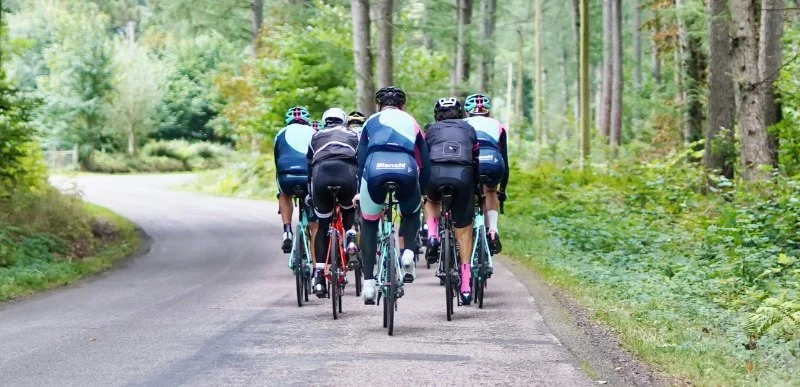
Cycling Etiquette: The Do’s and Don’ts
- 1. Why Cycling Etiquette Matters
- 2. The Do's of Cycling Etiquette
- 3. The Don’ts of Cycling Etiquette
- 4. Real-Life Cycling Etiquette Examples
- 5. How to Improve Your Cycling Etiquette
1. Why Cycling Etiquette Matters
Cycling etiquette is crucial not only for your safety but for the safety and well-being of others on the road. Whether you're a seasoned cyclist or just starting out, following proper cycling etiquette helps ensure that everyone can enjoy the roads safely. Adhering to these guidelines makes cycling more enjoyable for all and reduces the risk of accidents.
2. The Do's of Cycling Etiquette
There are several things you should always do while cycling to show respect for other riders and pedestrians. Some of the key do's include:
- Use hand signals to indicate turns and stops.
- Ride in a straight line to make it easy for others to pass.
- Always wear a helmet and appropriate protective gear.
- Obey traffic signals and signs just like any other vehicle.
- Stay in your lane and keep a safe distance from other cyclists and vehicles.
3. The Don’ts of Cycling Etiquette
Just as there are things you should do while cycling, there are also several things you should avoid doing to maintain proper cycling etiquette. Some of the major don’ts include:
- Don’t cycle on sidewalks—stick to the road or designated bike lanes.
- Don’t use your phone while cycling; stay focused on the road.
- Don’t cycle in the wrong direction on one-way streets.
- Don’t ride too close to parked cars to avoid getting hit by doors opening.
- Don’t make sudden stops or lane changes without signaling.
4. Real-Life Cycling Etiquette Examples
Let’s look at a few real-life examples of cycling etiquette in action:
- A cyclist using hand signals when changing lanes during a busy morning commute in London to alert drivers and pedestrians, preventing potential accidents.
- A group of cyclists riding in single file along a rural road to allow cars to pass safely and avoid obstructing traffic.
- A cyclist slowing down when approaching a crosswalk to give pedestrians the right of way, ensuring mutual respect between cyclists and walkers.
5. How to Improve Your Cycling Etiquette
To improve your cycling etiquette, consider the following tips:
- Stay informed on local cycling laws and regulations.
- Be courteous and aware of your surroundings, especially in crowded areas.
- Respect others’ space and avoid sudden movements.
- Practice good bike maintenance to ensure your bike is in safe working order.
- Take cycling safety courses to sharpen your skills and knowledge.
By incorporating good cycling etiquette into your daily rides, you can contribute to a safer and more pleasant cycling experience for everyone. Whether you're commuting, cycling for fitness, or just enjoying a leisurely ride, always keep safety and respect for others at the forefront. For more tips on cycling and the best cycling products, visit Cycling Guider.







 Billet BMX5.0 (2 reviews)
Billet BMX5.0 (2 reviews) Far East Children Bicycle Factory1.0 (1 reviews)
Far East Children Bicycle Factory1.0 (1 reviews) Archer Motorsports, Inc.4.0 (8 reviews)
Archer Motorsports, Inc.4.0 (8 reviews) YEP Bike Works4.0 (55 reviews)
YEP Bike Works4.0 (55 reviews) Gorham Bike & Ski4.0 (498 reviews)
Gorham Bike & Ski4.0 (498 reviews) Alchemy Bikes4.0 (37 reviews)
Alchemy Bikes4.0 (37 reviews) How to Teach Kids to Ride a Bike: A Step-by-Step Guide for Parents
How to Teach Kids to Ride a Bike: A Step-by-Step Guide for Parents Tips for Riding on Busy City Streets: Smart Strategies for Urban Cyclists
Tips for Riding on Busy City Streets: Smart Strategies for Urban Cyclists Best US National Parks for Mountain Biking: Ride Epic Trails Across America
Best US National Parks for Mountain Biking: Ride Epic Trails Across America Best Aero Helmets for Time Trials and Racing
Best Aero Helmets for Time Trials and Racing How to Clean and Lubricate Your Bike Chain Like a Pro
How to Clean and Lubricate Your Bike Chain Like a Pro 10 Must-Have Items for Long-Distance Cycling Trips
10 Must-Have Items for Long-Distance Cycling Trips